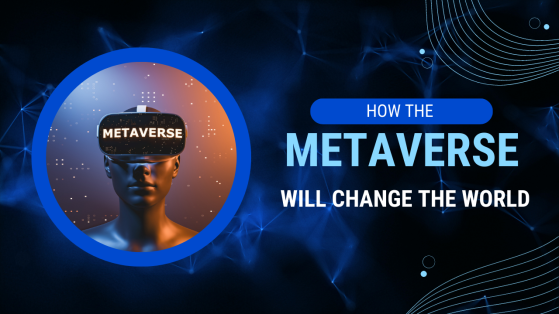"Understanding the Metaverse: The Future of Virtual Reality and Digital Interaction"
Introduction
The term "Metaverse" has rapidly gained popularity, becoming one of the most talked-about concepts in tech. It signifies a collective virtual shared space that merges the physical and digital worlds, where users can interact through augmented reality (AR), virtual reality (VR), and blockchain technology. The metaverse is set to transform how we live, work, socialize, and play. This article delves into the various aspects of the metaverse, from its definition and evolution to its applications and potential impact on the future.
1. What is the Metaverse?
The metaverse is essentially a digital universe that combines the real and virtual worlds. Through VR headsets and other immersive technology, users can explore, interact, and engage in various activities in an entirely virtual environment. It can be thought of as an advanced, immersive version of the internet, where people can engage in real-time interactions.
2. Origins and Evolution
The concept of the metaverse originated in science fiction, with early mentions in the 1992 novel "Snow Crash" by Neal Stephenson. In recent years, technological advances have made the metaverse a reality, thanks to improvements in VR, AR, and AI. The growth of blockchain has further enhanced the metaverse, enabling digital ownership and economic activity through cryptocurrencies and NFTs.
3. Key Components of the Metaverse
Several key technologies drive the metaverse, including:
- Virtual Reality (VR) and Augmented Reality (AR): These create immersive 3D experiences for users, allowing them to interact with the virtual environment.
- Blockchain and Cryptocurrencies: Blockchain technology supports decentralized virtual economies, enabling secure transactions and digital asset ownership.
- Artificial Intelligence (AI): AI powers user interactions, creating realistic virtual environments and avatars.
- Internet of Things (IoT): IoT connects real-world devices to the metaverse, enabling data exchange between the physical and virtual worlds.
4. Applications of the Metaverse
The metaverse offers numerous applications across various industries:
- Gaming and Entertainment: Gaming is currently the largest and most established aspect of the metaverse. Platforms like Roblox and Fortnite are creating fully immersive gaming experiences with social components.
- Social Interaction and Virtual Events: Social platforms like Facebook Horizon and VRChat enable users to communicate and hold events in a virtual space, providing a sense of presence.
- Education and Training: Through VR and AR, the metaverse allows virtual classrooms and training simulations, making learning more interactive and accessible.
- E-commerce and Virtual Markets: Businesses can establish virtual storefronts where users can shop and interact with products. With NFTs, digital assets like virtual real estate, art, and collectibles can be bought and sold.
- Work and Collaboration: The metaverse enables virtual offices, allowing employees to work and collaborate in a virtual environment, which is especially useful for remote teams.
5. The Future Impact of the Metaverse
The metaverse is poised to revolutionize multiple aspects of our lives:
- Economic Opportunities: Virtual businesses and services in the metaverse are creating new job opportunities. Many predict the metaverse will have its own economy, fueled by digital transactions and blockchain-based ownership.
- Cultural Impact: As people spend more time online, the metaverse will influence fashion, music, and social interactions.
- Privacy and Security Concerns: With the growing presence of personal data in the metaverse, privacy and data security issues will become paramount.
- Health and Well-being: Extensive VR use may have implications for physical and mental health, necessitating responsible metaverse use.
6. Challenges and Criticisms
Despite its potential, the metaverse faces challenges:
- Technical Limitations: High-speed internet and advanced VR/AR hardware are essential for an immersive metaverse experience.
- Privacy Concerns: Data protection is a significant concern as more personal information becomes part of the metaverse.
- Regulatory Issues: Legal questions around ownership, rights, and taxation in the metaverse are yet to be fully addressed.
- Digital Divide: Access to the metaverse may be limited for people without the necessary technology, widening the digital divide.
Conclusion
The metaverse represents a new era in digital interaction, where virtual and real worlds converge, creating unprecedented opportunities. While its future holds enormous promise, the metaverse also poses challenges that need careful consideration. As more companies and individuals invest in this digital universe, it’s only a matter of time before the metaverse becomes an integral part of our everyday lives.
